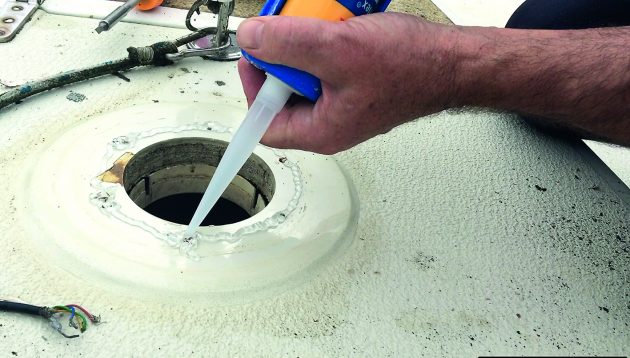A sealant is a material used to seal gaps and holes, and make something airtight or watertight. Sealants tend to be flexible, making them useful for areas and joints where contraction or expansion may occur.
They’re not the same as adhesives but some sealants – such as Sikaflex – do have adhesive properties.
There are many different types of sealant. For example, silicone is an inorganic substance whereas polyurethane is organic, meaning it’s more responsive to UV rays and over time will eventually break down.
Silicone sealants are compatible with many materials but don’t bond well to wood. Polyurethane sealants dry hard and are better for sealing wood but can be difficult to apply.
Article continues below…
Snotter trick – how to prolong the life of your sealant
Next time you work with a marine sealant, be sure to leave it hanging, and don’t be tempted to remove…
Which adhesive sealant is best?
Alex Bell and a PBO test team get stuck into a thorough trial of nine products to assess which adhesives…
Silicone is inherently stable and more robust in terms of weatherproofing, though it’s possible to add chemicals to polyurethane to increase UV resistance, which you’ll find in a range of marine sealants.
Silicone sealants are significantly more expensive than polyurethane ones, so whether you’re using them inside or out, and for what purpose, will affect which type you buy.
If you’re going to need to replace the sealant several times over, silicone may represent better value for money even though the initial cost could be higher.
If you’re swapping over from polyurethane to silicone you need to ensure every last trace of the old sealant is removed with a scraper and acetone otherwise the seal could break down.
Among boat owners, Sika is well known for its range of marine sealants, designed for elasticity, durability and UV exposure.
However, there are lots of different types, and choosing the right one for the job – whether you’re caulking, levelling, bedding, sealing or bonding – is important.






